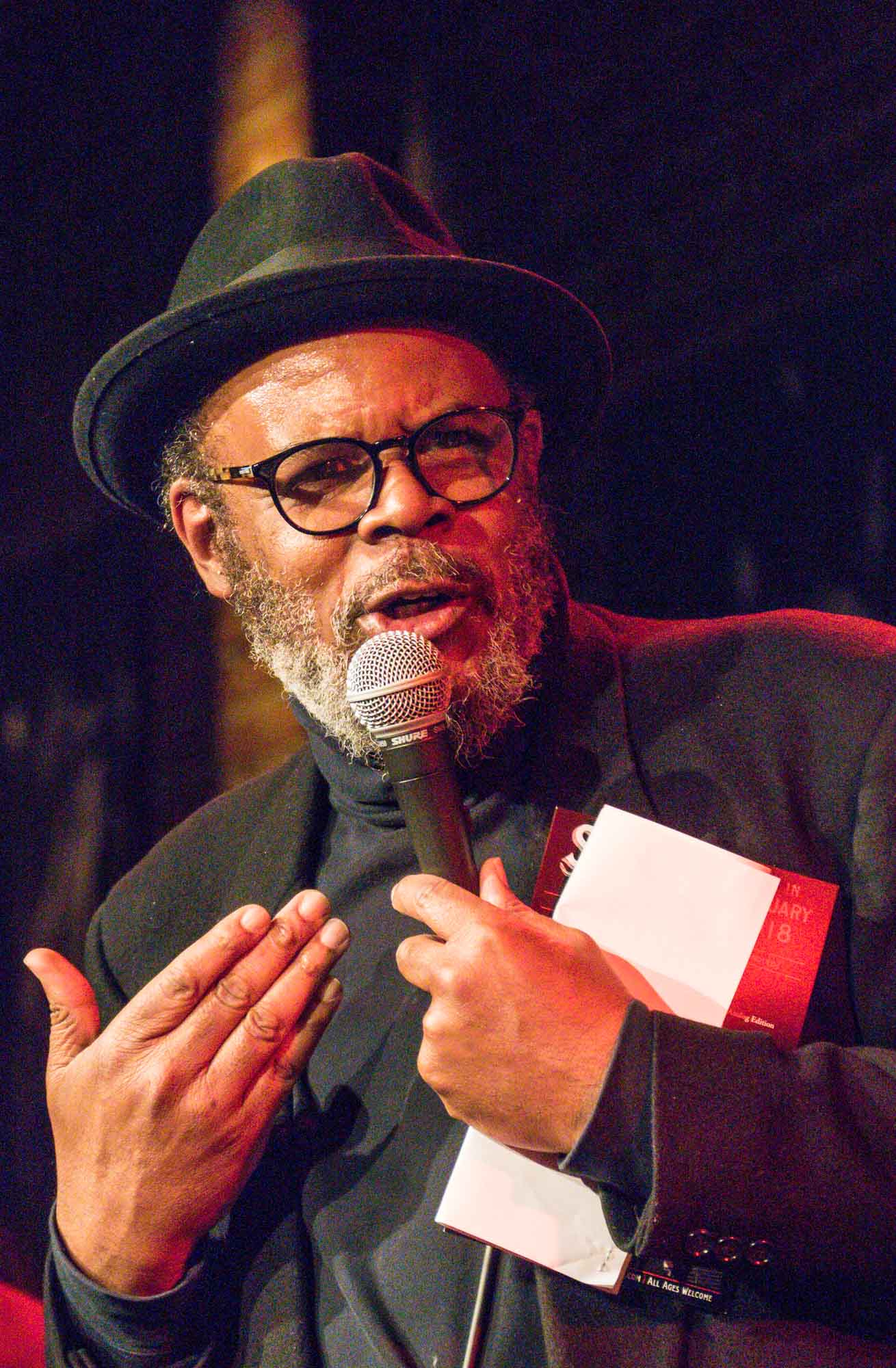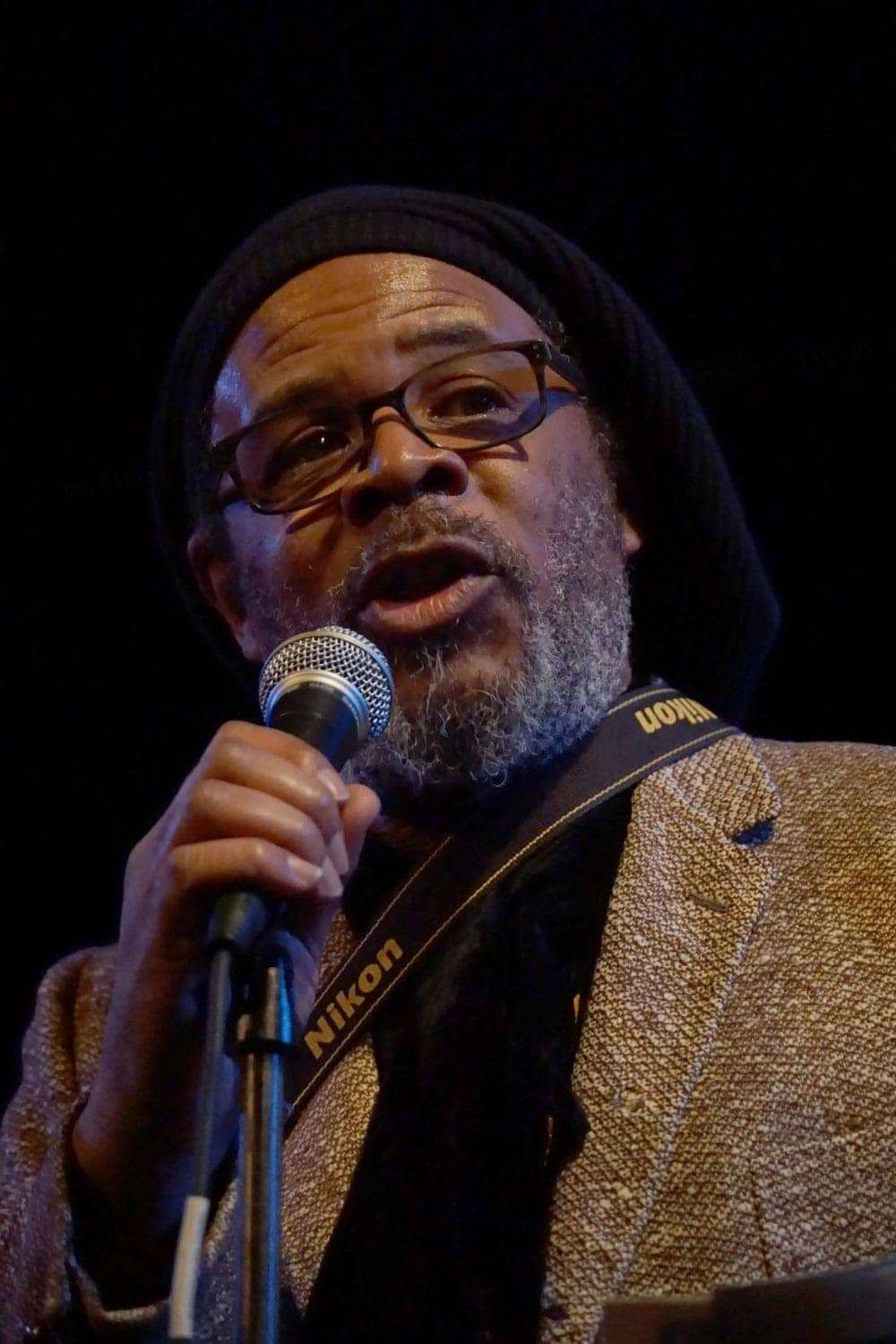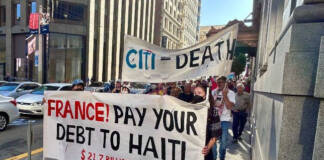
by People’s Minister of Information JR Valrey, SF Bay View Oakland Bureau
The legendary KCSM and KPFA radio DJ and broadcaster Greg Bridges will be one of the onstage hosts at the San Jose Jazz Summer Fest this year, which takes place from Aug. 12-14. “Transitions on Traditions,” which airs on 94.1FM in northern Cali on Mondays from 8-10 p.m., Greg’s KPFA show is one of the best jazz shows heard on Bay Area radio regularly; it is filled with old school and contemporary jazz as well as artists who fit the mix, which may be from other musical genres.
Listeners get to go on a weekly audio exploration of a musical library that exists within the depths of Greg Bridges’ mind, extensive knowledge and appreciation for the art form. Check out Greg Bridges out here as we talk about the San Jose Jazz Summer Fest, his career, the art form, the ageism in hip hop in relationship to jazz and more.
JR Valrey: How long have you been a lover of jazz, and how did your love for jazz start?
Greg Bridges: Music has been in my life for as long as I can remember. My father was a jazz musician named Oliver Johnson; he introduced me to so much of the music that influences me every day, although some of the music I was hearing with him, I wasn’t ready for at the time. As a kid I was more into music by Curtis Mayfield, Marvin Gaye, Jackson Five and a lot of the soul and R&B that I was hearing on the radio and in the houses of friends and family.
My first experience in a professional radio station was as an intern at KJAZ radio.
My mother and (step)father played music around the house all the time. When there was jazz being played, it was more on the soulful side, like Hank Crawford, Ray Charles, The Three Sounds, King Curtis and things like that. As I got into high school, I started paying more attention to the jazz that my dad was trying to turn me on to earlier. Although I was grooving to Parliament and things like that, I was also listening to Miles Davis, Cannonball Adderley, Ahmad Jamal and other things as well.
JR Valrey: How did you get into broadcasting, and what are the radio stations that you worked for? Who are you with now?
Greg Bridges: I was always fascinated by radio DJs and announcers here in the Bay Area. I’d hear cats like Nick Harper, Bob Jones, “Hard Punchin’” Herman Henry, Sam Skinner, P.J. Ballard. KDIA, KSOL and KSAN were a few of the stations that I listened to and I’d imagine myself being one of those cats.
In high school I became a big fan of the folks on KRE radio, and I’m still influenced by what I heard on their airwaves. Some of the folks on air there were “Big Daddy” Roy Lee Freeman, Rick Holmes, Lady Talia and Clifford Brown Jr., who remains one of my biggest influences.
My first experience in a professional radio station was as an intern at KJAZ radio. During that time I was also taking a radio class at Chabot College in Hayward, and prior to Chabot I had a Saturday night show at San Jose State’s station, KSJS. As an intern at KJAZ, my duties included refiling the albums after DJs finished their shifts, making sure things stayed alphabetized and ripping news stories from the AP wire for the DJs to read on air. The morning DJ that I was working for, Stan Dunn, started having me read the news stories on air.
The program director there, Tim Hodges, dug my work ethic and my growing knowledge of the music, so one night he gave me a time slot to fill. Even though I was green, he felt that I could be good, so little by little he started giving me more shifts. That was around 1986, and I’ve been on air somewhere ever since.
JR Valrey: What is special about the San Jose Jazz Festival, and how long have you been associated with them?
Greg Bridges: I’ve been going to the San Jose Jazz Festival for most of its existence. I emceed at either the first or second festival, which featured Bobby Hutcherson’s Quartet and Poncho Sanchez’ group. I saw it grow from one stage to multiple stages; I believe there are 12 stages this year.
Some of my favorite “jazz” musicians are the ones who can cross boundaries.
I’ve seen legends such as Albert “Tootie” Heath, George Duke, Jimmy Cobb and many others, and I’ve seen some of the contemporaries including Derrick Hodge, Robert Glasper, Jose James, Lizz Wright among them. San Jose Jazz has also been good about featuring artists who aren’t well known and artists on the come up. I dig that they feature many of our resident artists on the same stages as the national and international artists.
JR Valrey: Where will you be hosting? And who is on the lineup?
Greg Bridges: This year I’m hosting the main stage for the second year. Appearing on that stage will be Urban Renewal Project, Durand Jones, Ladysmith Black Mambazo, Leela James, Charlie Wilson, Javon Jackson, Stanley Clarke, Ledisi and more. I’m looking forward to it.
JR Valrey: How do you feel about classic jazz vs. contemporary jazz? Who are some of your favorites from both eras and why?
Greg Bridges: I really don’t make that type of distinction of one vs. the other. The way that I listen to artists of past eras like Dizzy Gillespie, John Coltrane, Miles Davis and others is the same way I listen to current cats like Jason Moran, Mimi Jones, Theo Croker and others of today. I just like good music, and something really good will be that way, in any era.
I also like the way that a lot of hip hop today has expanded beyond sampling to also featuring jazz musicians playing live.
Some of my favorite “jazz” musicians are the ones who can cross boundaries, including Wayne Shorter, Miles, Lee Morgan, Roy Hargrove, Terri Lyne Carrington, Michele Rosewoman, Omar Sosa, Russell Gunn, Mimi Jones, Regina Carter – it’s a pretty long list. Marcus Strickland’s Twi-Life is a group that I’m really into right now. Marcus plays saxophones and bass clarinet, and the band sets grooves that will satisfy the “serious jazz listener” as well as fans of hip hop and R&B.
JR Valrey: How do you feel as a jazz enthusiast about hip hop artists sampling jazz albums?
Greg Bridges: I’m cool with it. I’ve heard some creative things done with sampling. A Tribe Called Quest is one of my all time favorite groups of any genre. Pete Rock & C.L. Smooth, Queen Latifah and others have created classics that have included jazz samples.
I also like the way that a lot of hip hop today has expanded beyond sampling to also featuring jazz musicians playing live, such as Kendrick Lamar, whose work has included performances by Kamasi Washington and Terrace Martin. Many of the current generation of jazz musicians also grew up with hip hop as a part of their vocabulary, so they are more open to building bridges and erasing boundaries in music.
JR Valrey: Hip hop artists for the most part are not allowed to get old by fans of the genre, while on the flip side jazz is viewed as an older people’s genre, which makes it harder to get respect as younger emerging artists. What do you think about these concepts that we place on our music genres?
Greg Bridges: Although jazz is seen as an older person’s genre, most of the musicians that we know of became professionals by the time they were teenagers or into their early 20s. Duke Ellington had already been a professional musician for a few years by the time he moved from D.C. to Harlem and became a part of the Harlem Renaissance.
Currently, there’s a sister in her early 20s named Samara Joy who’s definitely someone to listen for. She sounds like she’s going to be around for a while.
He was 26 when he began his long run at the Cotton Club, and in his late 20s and early 30s when he was composing and recording classics like “It Don’t Mean A Thing (If It Ain’t Got That Swing),” “Mood Indigo,” “Sophisticated Lady” and more. Miles Davis was 19 when he connected with Charles “Yardbird” Parker and Dizzy Gillespie, who were in their mid 20s. Thelonious Monk, Bud Powell and the other musicians of that era all entered the music at a young age. That’s always been the way.
Herbie Hancock has been around for several generations. He’s 82 years old and still performing and recording now, but he was 22 years old when he recorded his first album as a leader, and by that time he’d already been playing with Donald Byrd and Coleman Hawkins. Herbie was 23 when he joined Miles Davis’ band that also included 19-year-old Tony Williams.
At 31, he started his Mwandishi band and at 33 he started the Head Hunters. I use Herbie Hancock’s career as an example because he’s someone who is known by multiple generations of listeners and many who got to know him at different points of his career. By the time he recorded “Rockit,” he was 43 years old and being discovered by a new generation. The musicians around us now like Howard Wiley, Marcus Shelby, Kev Choice, Sundra Manning, Cava Menzies – they all started young in this music.
Currently, there’s a sister in her early 20s named Samara Joy who’s definitely someone to listen for. She sounds like she’s going to be around for a while. There’s this dynamic young pianist named Joey Alexander who’s now 18 but has been performing and recording professionally since he was about 11.

There are many other young musicians in jazz who are doing nice things and deserve recognition, but as you noted, the perception of jazz is that it’s an older person’s genre. I try to adjust that perception through my radio shows.
I’m not a musician, so I’m not qualified to speak on emerging artists not getting respect; however, I can say that from conversations I’ve had with older musicians that they respect those who really put in time with their instrument and constantly work to get better.
I think hip hop artists who continue to make good music should be allowed to grow old with the music. Things like the Vezuz have proven that there’s still an audience for the elders of hip hop. I think Q-Tip’s lyrics, “Rap is not pop; if you call it that, then stop,” should also apply to the business end of hip hop. What I mean by that is it seems like “pop” music puts an age limit on the career of an artist. Once an entertainer is past that age limit, they are moved aside for the next young entertainer.
I’m happy to see some of the elders of hip hop like Chuck D, Kurtis Blow, KRS One, Slick Rick come together to form the Hip Hop Alliance, which is being billed as hip hop’s first official union. I don’t know what that means overall but perhaps some of the issues of ageism in hip hop may be addressed through the union.
JR Valrey, journalist, author, filmmaker and founder of Black New World Media, heads the SF Bay View’s Oakland Bureau and is founder of his latest project, the Ministry of Information Podcast. He can be reached at blockreportradio@gmail.com, on Facebook and on Instagram @ministryof411podcast. Visit www.BlackNewWorldMedia.com to read more.





